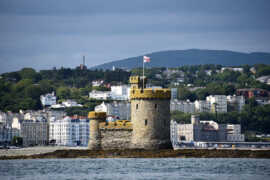img#mv-trellis-img-1::before{padding-top:66.666666666667%; }img#mv-trellis-img-1{display:block;}img#mv-trellis-img-2::before{padding-top:100%; }img#mv-trellis-img-2{display:block;}img#mv-trellis-img-3::before{padding-top:100%; }img#mv-trellis-img-3{display:block;}img#mv-trellis-img-4::before{padding-top:100%; }img#mv-trellis-img-4{display:block;}img#mv-trellis-img-5::before{padding-top:100%; }img#mv-trellis-img-5{display:block;}img#mv-trellis-img-6::before{padding-top:100%; }img#mv-trellis-img-6{display:block;}img#mv-trellis-img-7::before{padding-top:100%; }img#mv-trellis-img-7{display:block;}img#mv-trellis-img-8::before{padding-top:100%; }img#mv-trellis-img-8{display:block;}We’re not sure about you, but here at Travel Off Path, it’s usually the lesser-known destinations, yet to be spoiled by the masses, that make our hearts flutter—not your usual Barcelonas, Dubrovniks, or Santorinis.
Needless to say, while every other travel publication has got their eyes fixated on the Mediterranean this season, we’ve been scanning the map of the Old Continent for those true hidden gems.
Home to around 84,000 inhabitants, and located halfway between Great Britain and Ireland, we guess it’s safe to say the Isle of Man is one of them, and guess what, it’s surging in popularity at the moment:
One Of Europe’s Last Hidden Gems
The Isle of Man is a small, self-governing British Crown Dependency best known for its rugged, unspoiled nature, medieval history, and rich maritime heritage.
Although it is represented internationally by the United Kingdom, and local islanders are no less British when traveling abroad, it is not technically part of that country and has retained a unique ‘Manx’ identity.
Deeply rooted in ancient Celtic cultures, this is best evidenced in the local Manx dialect of English, which features distinct characteristics and accents, as well as the Manx language, a close relative of Irish and Gaelic.
The Isle of Man’s fascinating culture, as well as its unusual international status, make it an interesting enough destination for travelers looking for a ‘niche’, and unusual getaways, but how does it fare as a summer vacation?
Why The Isle of Man Is Becoming More Popular
Visit Isle of Man, the main tourism body on the island, has finally published its 2024 figures, and according to them, a total of 329,613 tourists made the Isle of Man their destination last year.
While most tourists originate from the British Isles, 12.5% of all visitors hailed from ‘overseas markets’, and the interesting bit of information is that 98.7% of them reported their trip ‘either met or exceeded expectations’.
61% of them engaged in outdoor pursuits, going on walks, rambling, or exploring the tiny landmass’ surprisingly large collection of glens and parks. 25% focused on cultural experiences, visiting Manx National Heritage Sites.
Finally, 22.7% went there for ‘heritage railways‘—yep, as in, they came all this way to ride the Isle’s historic trains:
The Most Scenic Way To Get Around The Island Is This
The Manx Electric Railway and the Steam Railway, which have been in operation for decades, are not only a mode of transport, they’re a whole experience.
For instance, the Electric Railway runs from Douglas, the capital of the Isle of Man, to Ramsey, a small town at the foot of Snaefell Mountain, the island’s highest peak, passing through a number of sleepy coastal settlements and offering scenic seaside views.
It’s the oldest electric tram line in the world to have retained its original rolling stock, which is pretty cool.
Meanwhile, the Steam Railway is essentially a journey back in time, choo-chooing its way from Douglas again, all the way to Castletown and Port Erin, two historic towns in the south of Man.
Port Erin is a charming seaside village best known for its oceanfront developments, white-sand beach, and landmark Cozy Nook cafe, where you can gorge on scones with jam and clotted cream, homemade biscuits, and hot chocolate.
As for Castletown, it is one of Man’s postcard towns, mainly due to Rushen Castle, its sturdy medieval fortress, built by a Viking king. Before Douglas became the largest and most important port, this was the island’s capital.
What Else To See On The Island
If you’re visiting the Isle of Man, however, chances are you’ll be based in, and spending much of your time in Douglas:
The only city proper, with a population of over 26,000, it is famous for its Victorian-era seafront walk, beautiful harbor lined with yachts and welcoming pubs, and its tranquil Nobles Park, featuring gardens and a lake.
Other must-see spots include Peel, home to a well-preserved Old Town, dominated by a ruined sandstone castle, Laxey, where some of the most beautiful Victorian houses on the island can be seen, and Port St Mary, distinguished by its whitewashed cottages.
For the nature enthusiasts, don’t miss out on the Calf of Man, a tiny islet off the coast and a birdwatching spot.
It is one of the least visited British islands, and you can only get there with a small ferry from the mainland, so this one’s for the thrillseekers.
On the West of Man, Glen Maye is a lush valley dotted with waterfalls and traversed by shimmering streams, though if you’re looking for something truly breathtaking, head straight for the Ayres Nature Reserve.
A wild, dune and salt-marsh-covered landscape on the north coast, it is one of the most peaceful spots for walks on the island, and it’s great for wildlife spotting: think sandpipers, waders, and all sorts of birds of prey.
The more offbeat alternative would be Dalby, a forest and reservoir cut through with more walking trails, offering panoramic views of both the countryside and coast.
The Isle of Man is only about 32 miles long and 14 miles wide at its widest point, so all of these sites can be reached in under an hour from Douglas.
Where To Stay On The Isle Of Man
Looking for a place to stay? Douglas is, without question, the best home base for exploring the island, due to its big selection of restaurants, busy shopping scene, and road and train connections.
This summer, the 3-star Rutland Hotel has rooms from as cheap as $108-a-night for 2 adults, or $52 each. That’s surprisingly affordable for the British Isles, especially during the peak season!
Keen on sampling Manx cuisine? You should try The Tasting Room’s Manx lamb and queenies (scallops) when in Douglas, and those meaty sausages with gravy and mashed potato they serve at The Black Dog, down in Castletown.
The average price of a pub meal on the Isle of Man is £10–£15, or $12.50–$18.75, and pints can go as cheap as $4.40 so don’t worry you’re gonna blow the budget. This is no London.
How To Get To The Isle Of Man
Last but most definitely not least, how do you get to this unheard-of Celtic paradise?
You can perhaps ferry your way there from some point in England or Ireland, but the easiest, and most convenient way is flying.
Isle of Man Airport hosts flights from a number of British cities (London, Liverpool, Manchester, Edinburgh, Bristol, Newquay, and others), as well as Dublin in Ireland, and thanks to low-cost operators like Ryanair and easyJet, one-way tickets start from as low as $37 one-way.
If that scorching Mediterranean heat is putting you off, and you’re craving something a little more off-the-beaten-path, now you know where to go this summer.
Vinicius CostaVini, our senior lead writer at Travel Off Path, has over 60+ countries under his belt (and currently weaving tales from Paris!), and a knack for turning off-the-beaten-path experiences into informative stories that will have you packing your bags.
The Travel Off Path Advantage: Your Travel Toolkit
/* Scoped Styles for the Promo Box to prevent theme conflicts */
.top-promo-wrapper {
font-family: ‘Poppins’, sans-serif;
max-width: 896px;
margin: 2rem auto;
background-color: #ffffff;
padding: 1.5rem;
border-radius: 1rem;
box-shadow: 0 10px 15px -3px rgba(0,0,0,0.1), 0 4px 6px -2px rgba(0,0,0,0.05);
border: 1px solid #e5e7eb;
}
.top-promo-grid {
display: grid;
grid-template-columns: repeat(1, minmax(0, 1fr));
gap: 1.5rem;
}
.top-promo-card {
display: block;
padding: 1.5rem;
border-radius: 0.75rem;
text-align: center;
border-width: 1px;
transition: transform 0.2s ease-in-out, box-shadow 0.2s ease-in-out;
}
.top-promo-card:hover {
transform: translateY(-5px);
box-shadow: 0 10px 20px rgba(0, 0, 0, 0.1);
}
.top-promo-card .icon-container {
display: flex;
justify-content: center;
margin-bottom: 0.75rem;
}
.top-promo-card .icon-circle {
width: 3rem;
height: 3rem;
border-radius: 9999px;
display: flex;
align-items: center;
justify-content: center;
}
.top-promo-card .icon-svg {
width: 1.5rem;
height: 1.5rem;
color: #ffffff;
}
.top-promo-card .icon-svg-fb {
width: 1.75rem;
height: 1.75rem;
color: #ffffff;
}
.top-promo-card h3 {
font-size: 1.25rem;
line-height: 1.75rem;
font-weight: 700;
margin-top: 0; /* Theme override */
margin-bottom: 0; /* Theme override */
}
.top-promo-card p {
font-size: 0.875rem;
line-height: 1.25rem;
margin-top: 0.5rem;
color: #4b5563;
}
/* Specific colors */
.top-promo-card.purple { background-color: #faf5ff; border-color: #e9d5ff; }
.top-promo-card.purple:hover { border-color: #c084fc; }
.top-promo-card.purple .icon-circle { background-color: #7e22ce; }
.top-promo-card.purple h3 { color: #5b21b6; }
.top-promo-card.blue { background-color: #eff6ff; border-color: #bfdbfe; }
.top-promo-card.blue:hover { border-color: #60a5fa; }
.top-promo-card.blue .icon-circle { background-color: #2563eb; }
.top-promo-card.blue h3 { color: #1e40af; }
/* Responsive grid for larger screens */
@media (min-width: 768px) {
.top-promo-grid {
grid-template-columns: repeat(2, minmax(0, 1fr));
}
.top-promo-wrapper {
padding: 2rem;
}
}
Subscribe To Our Latest Posts
Enter your email address to subscribe to Travel Off Path’s latest breaking travel news, straight to your inbox.
Appeared first on: traveloffpath.com




